Did you know that the beauty industry generates more than 120 billion units of packaging globally every year—and most of it isn’t recycled? This staggering statistic casts a spotlight on one of the sector’s biggest challenges: sustainable & eco-friendly beauty and cosmetics packaging. As beauty practitioners, business managers, researchers, and students seek fresh, credible insights, this article draws from latest trends, academic expertise, and real-world brand case studies to reveal how the shift toward recyclable, refillable, and biodegradable packaging is rapidly reshaping the beauty industry for the better.
Setting the Stage: Why Sustainable & Eco-Friendly Beauty and Cosmetics Packaging Matters Now More Than Ever
Sustainable & eco-friendly beauty and cosmetics packaging has emerged as a defining trend, driven by the increasing urgency to address environmental concerns such as plastic waste, climate change, and the industry’s growing carbon footprint. In an age when consumers demand more from their care products, the spotlight is now on packaging solutions that do more than just look good—they must also do good. The prevalence of traditional packaging materials, like single-use plastics, not only results in unnecessary landfill waste but also hinders efforts to promote a more sustainable beauty sector.
As international regulations tighten and conscious consumption takes hold, beauty brands—whether luxury skincare lines or everyday beauty product companies—face mounting pressure to adopt sustainable packaging. This shift is about more than compliance; it’s a response to clear consumer demand for clean beauty and environmentally friendly products. Companies that embrace recycled plastics, glass jars, biodegradable alternatives, and refillable packaging aren’t just leaders; they’re innovators meeting a marketplace eager for change. And with beauty practitioners and industry managers recognizing these trends, staying informed is essential for competitiveness and credibility.
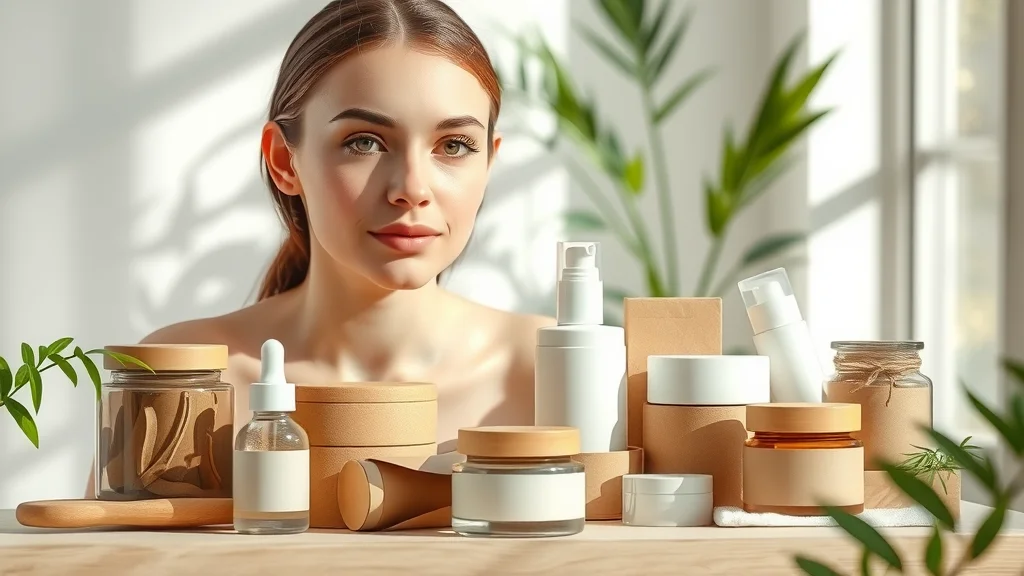
A Startling Statistic: The Environmental Toll of Traditional Beauty Packaging
Traditional beauty packaging has created an environmental crisis that can no longer be ignored. An estimated 70% of the beauty industry’s waste originates from packaging alone, with most of that waste coming from unrecyclable or non-biodegradable plastics and cardboard. This reliance on conventional plastics not only burdens our landfills but also contributes to global microplastic pollution, which infiltrates our oceans and food chains. For context, every single-use beauty product container that isn’t properly recycled persists in the environment for centuries, breaking down into tiny particles that threaten marine biodiversity and even human health.
The beauty industry’s impact is amplified by its popularity—consider how many millions purchase skincare packaging or cosmetic tubes weekly. These products, despite their small size or seemingly harmless packaging material, add up to vast quantities of plastic waste annually. This urgent issue is pushing brands, researchers, and regulators alike to rethink what friendly packaging should look like, combining innovation with responsible material choice. Now more than ever, sustainable & eco-friendly beauty and cosmetics packaging stands as a vital part of the global movement toward a cleaner, more responsible future.
As brands and consumers alike seek to minimize their environmental impact, understanding the nuances of sustainable packaging materials becomes crucial. For a deeper dive into how glass, bamboo, and recycled plastics are transforming the industry, explore our comprehensive guide on key materials used in sustainable beauty packaging and discover which options best align with your eco-friendly goals.
The Shift Toward Recyclable, Refillable, and Biodegradable Packaging Solutions
In response to these environmental challenges, beauty brands are embracing recyclable, refillable, and biodegradable packaging solutions at an unprecedented rate. Recyclable glass jars, post-consumer recycled plastics, bamboo caps, and compostable cartons are redefining luxury and everyday beauty packaging. The transition isn’t just about reducing plastic waste—it’s about designing entire product ecosystems that prioritize the use of environmentally friendly materials from inception to disposal.
Refillable systems are reshaping how consumers interact with their favorite care products: once a glass container or sleek aluminum tube is purchased, only the inner product requires replenishment, drastically cutting down on packaging waste. Meanwhile, biodegradable alternatives such as plant-based bioplastics and paper composites are gaining traction among sustainable skincare and cosmetic brands. The overarching goal? To close the loop on resource use and foster truly sustainable beauty packaging practices. Industry leaders now see these solutions not only as environmental imperatives but as strategic business moves responding to consumer demand, regulatory change, and the enduring promise of clean beauty.
What You'll Learn About Sustainable & Eco-Friendly Beauty and Cosmetics Packaging
- How leading brands are revolutionizing beauty packaging
- What makes packaging truly sustainable or eco-friendly
- Key materials and technologies shaping the industry
- Academic insights into packaging innovation
Understanding the Evolution: From Beauty Packaging to Sustainable Beauty Packaging
Historical Overview: Traditional Packaging Practices in the Beauty Industry
Historically, beauty packaging has prioritized style, brand identity, and convenience—often at the expense of sustainability. The rise of disposable plastics in the mid-20th century allowed beauty products and care products to become more affordable and widely available, but at a steep environmental cost. Classic packaging materials—from glossy coated boxes to brightly colored single-use plastic tubes—dominated retail shelves for decades, with little concern for recyclability or biodegradability. These choices contributed to mountains of plastic packaging and a growing carbon footprint.
The industry’s focus on allure and brand perception resulted in a proliferation of ornate packaging material and complex designs, making recycling difficult due to mixed materials and unrecyclable finishes. Beauty brands rarely considered the environmental impact of their choices, as supply chains favored cheap, mass-produced solutions. Despite the growing use of glass containers and metal tins for premium products, mass-market beauty product packaging remained largely unsustainable. This reliance on conventional plastic and unsustainable manufacturing methods set the stage for a revolution in what beauty packaging solutions mean today.
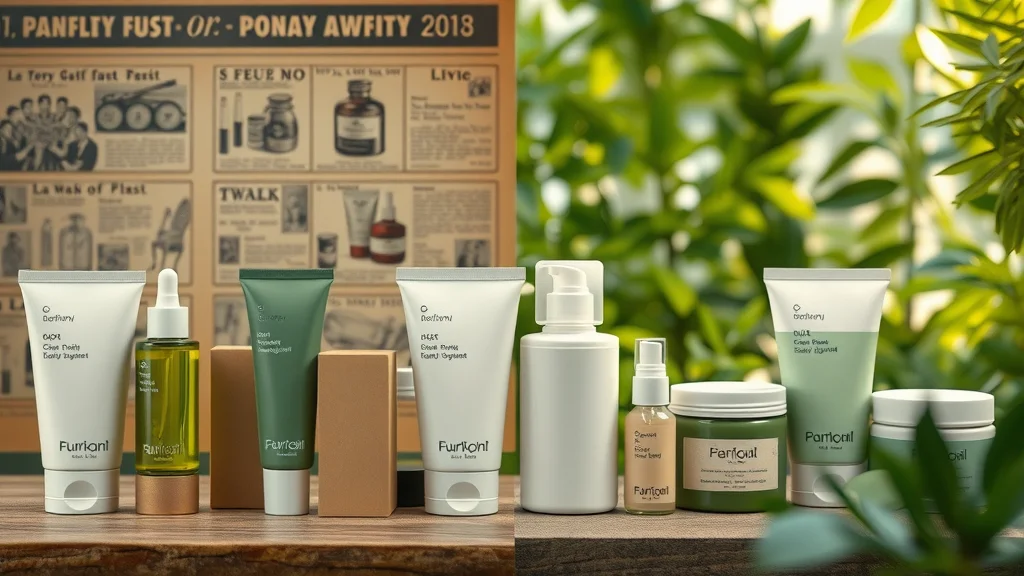
The Emergence of Sustainable Beauty and Skincare Packaging
As environmental awareness grew, the beauty industry began to confront the repercussions of unsustainable packaging. Early pioneers experimented with recycled paper, glass jars, and minimalistic design, setting new standards for sustainable beauty packaging. University labs, startups, and global beauty brands alike began to collaborate on packaging solutions that reduced resource consumption and embraced renewable raw materials. The emergence of the clean beauty movement further accelerated interest in environmentally friendly packaging, making it a central concern for beauty practitioners, industry managers, and researchers.
Today, the most innovative brands are focused on sustainable skincare packaging that uses less energy to produce, emits fewer greenhouse gases, and can be recycled, refilled, or composted after use. Refillable packaging—once considered niche—is now mainstream. The shift has also been bolstered by new regulations, increasing customer advocacy, and the realization that future growth in the beauty industry depends on lasting environmental stewardship. For everyone from product designers to academic researchers, keeping ahead of these trends is essential for relevance and success.
Key Drivers: Why Sustainable & Eco-Friendly Beauty and Cosmetics Packaging Is on the Rise
Plastic Waste Crisis and the Push for Sustainable Packaging
The mounting global plastic waste crisis has been a powerful catalyst for sustainable & eco-friendly beauty and cosmetics packaging innovations. With more than 8 million tons of plastic entering the oceans every year and a significant percentage of that coming from the personal care and beauty industries, pressure has intensified for companies to reevaluate their packaging solutions. Consumers, regulators, and environmental organizations have all pointed to plastic packaging as a primary culprit in the widespread pollution choking our water supplies, harming marine wildlife, and affecting communities worldwide.
Sustainable packaging is now viewed as both a moral obligation and a brand differentiator. Forward-thinking companies recognize that beauty packaging must be easy to recycle, made from post-consumer materials, or replaced altogether by eco-friendly, biodegradable options. This shift away from conventional plastic signals an industry-wide recognition that packaging solution decisions impact the entire beauty industry ecosystem. From major global brands to indie clean beauty startups, integrating sustainable material choices into skincare packaging strategies is an urgent priority that sets leaders apart in a rapidly evolving market.
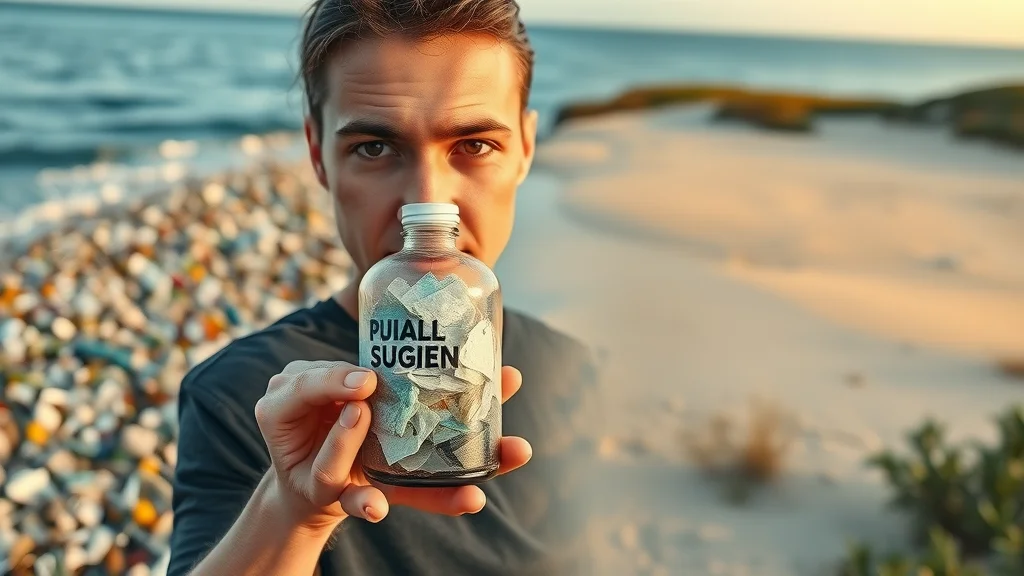
Consumer Demand for Sustainable Beauty and Skincare Solutions
The transformation of the beauty industry’s approach to sustainability isn’t solely driven by regulation or environmental groups—consumer demand is at the heart of the movement. Today’s customers, notably Millennials and Gen Z, expect brands to demonstrate environmental responsibility and embrace sustainable beauty. Surveys show that over 70% of beauty product buyers now prefer brands that use sustainable cosmetic packaging and offer transparency about their packaging material choices. This has given rise to a new breed of beauty brand prioritizing refillable packaging, recycled plastic, and biodegradable solutions right on their shelves.
These shifting preferences underscore that friendly packaging isn’t merely a marketing gimmick; it’s now a business imperative. Beauty industry professionals and product managers who fail to align with these consumer expectations risk falling behind both in reputation and revenue. New online platforms, product reviews, and social media campaigns now highlight the importance of sustainable skincare, pushing brands to adopt sustainable packaging solutions and avoid the negative press associated with plastic pollution or environmental negligence. As a result, sustainable and eco-friendly beauty packaging is no longer optional—it’s integral to brand trust, loyalty, and future growth.
Material Innovation: What Makes Packaging Sustainable & Eco-Friendly?
Recyclable Materials in Skincare Packaging and Cosmetics
The transition to truly sustainable packaging begins with material innovation. Recyclable materials such as glass jars, aluminum tins, and post-consumer recycled plastics are among the most popular choices for eco-conscious beauty packaging today. Glass containers, for example, offer a blend of durability, reusability, and premium feel, making them a favorite in sustainable skincare packaging. These alternatives also benefit from being infinitely recyclable, reducing raw material consumption, and delivering on consumer demands for environmentally friendly packaging.
Aluminum has also emerged as a top contender, prized for its lightweight properties and ability to be recycled without loss in quality. The growing use of PCR (post-consumer recycled) plastic gives existing materials new life by diverting plastic waste from landfills and oceans. The key to sustainable beauty packaging lies not just in choosing recyclable material, but in designing products for ease of disassembly, simple sorting, and end-of-life recovery. Increasingly, beauty brands are leveraging these innovative materials to offer packaging solutions that genuinely minimize environmental impact, proving that safe, stylish, and sustainable are no longer mutually exclusive.
Biodegradable and Compostable Alternatives in Sustainable Packaging Solutions
While recycling is important, many beauty brands have begun exploring biodegradable and compostable packaging materials as part of their eco-friendly evolution. Biodegradable plastics made from plant-based sources like corn starch, bamboo, or sugarcane offer a compelling alternative to conventional plastics, breaking down more quickly in composting environments. Compostable cartons and paper-based wraps have found particular favor among clean beauty and care product brands, ensuring that even single-use containers leave a minimal mark on the environment.
These materials address persistent problems associated with plastic packaging: longevity in landfills, microplastic generation, and chemical leaching. When designed and disposed of correctly, compostable options can become valuable soil—completing a truly circular packaging life cycle. However, beauty practitioners and research professionals must also consider the energy, water, and resources required to produce these newer materials, as not all biodegradable options are created equal. The academic and industry communities continue to investigate best practices, ensuring that biodegradable sustainable packaging delivers the desired environmental benefits without hidden trade-offs.
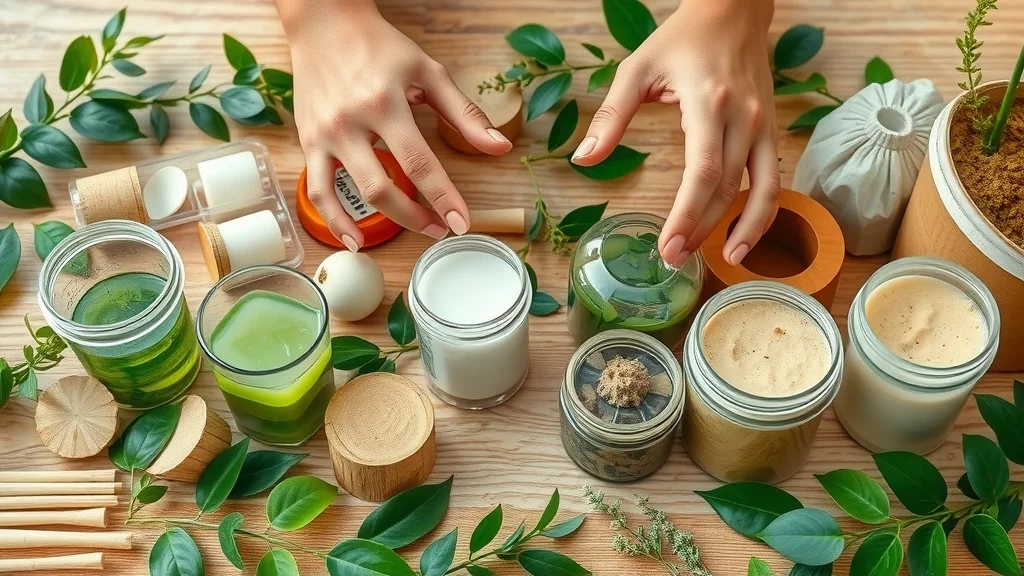
Refillable Systems: Changing the Game in Beauty and Sustainable Skincare Packaging
Refillable packaging is disrupting traditional packaging solutions in the beauty industry and quickly becoming a hallmark of innovative sustainable beauty packaging. Instead of disposing of entire containers, refillable systems encourage users to buy replacement pods, concentrates, or sachets to replenish their original bottles, jars, or cases. This model not only slashes single-use plastic waste but also provides a premium, customizable consumer experience that appeals to eco-minded customers and beauty aficionados alike.
Luxury skincare packaging lines often lead the way, offering elegant glass jars or aluminum canisters designed for repeated use. Major brands and indie disruptors alike are building refill stations in flagship stores, promoting free shipping or refill incentives, and rolling out subscription-based delivery for beauty product refills. As industry leaders and academic researchers track the environmental impact, refillable models are proving effective at slashing carbon footprints, reducing landfill waste, and helping beauty brands meet increasingly stringent environmental standards. The refill revolution is poised to transform not only how care products are purchased and used, but how the entire supply chain operates in a more circular, sustainable fashion.
Comparing Materials Used in Sustainable & Eco-Friendly Beauty and Cosmetics Packaging
| Material Type | Key Benefits | Common Use | End of Life |
|---|---|---|---|
| Glass (jar, container) | Infinitely recyclable, premium feel, preserves product | Skincare packaging, perfumes, luxury cosmetics | Recyclable, reusable |
| Aluminum | Lightweight, durable, recyclable, protects product | Deodorants, creams, refillable bottles | Recyclable |
| Post-Consumer Recycled Plastic | Reduces virgin plastic, diverts waste from landfill/ocean | Everyday beauty packaging, cleansers, bottles | Recyclable (sometimes limited) |
| Bamboo | Renewable, biodegradable, tactile aesthetics | Caps, containers, makeup brushes | Biodegradable, compostable |
| Compostable Paper/Card | Renewable, easily customizable, low impact | Secondary packaging, wraps, sample sachets | Compostable, recyclable |
| Bioplastics (PLA, PHA) | Plant-based, designed to degrade faster | Tubes, caps, sample pots | Compostable (where industrial facilities exist) |
Sustainable Beauty Packaging in Action: Brand Innovations and Case Studies
Brand Spotlight: Leaders in Sustainable Skincare and Cosmetic Packaging
The sustainable & eco-friendly beauty and cosmetics packaging revolution is now led by both established beauty giants and visionary startups. Brands like Lush have made headlines by adopting solid products that need no packaging at all, while REN and Kjaer Weis have pioneered refillable skincare and sustainable beauty packaging systems that reduce plastic waste and encourage resource conservation. These innovators design every aspect of their care product packaging—down to raw material sourcing and end-of-life recyclability—to minimize their environmental impact and inspire industry-wide transformation.
Clean beauty labels prioritize glass containers and compostable cartons, while many mainstream names now highlight PCR plastic content and free shipping on refills as core selling points. The embrace of friendly materials and cutting-edge technology is not just about optics; it’s about genuine stewardship of the planet and alignment with the values of a new digital-first customer base. For practitioners, researchers, and product managers seeking inspiration, these beauty brands exemplify sustainable packaging done right—showing that style, substance, and environmental responsibility can coexist beautifully.
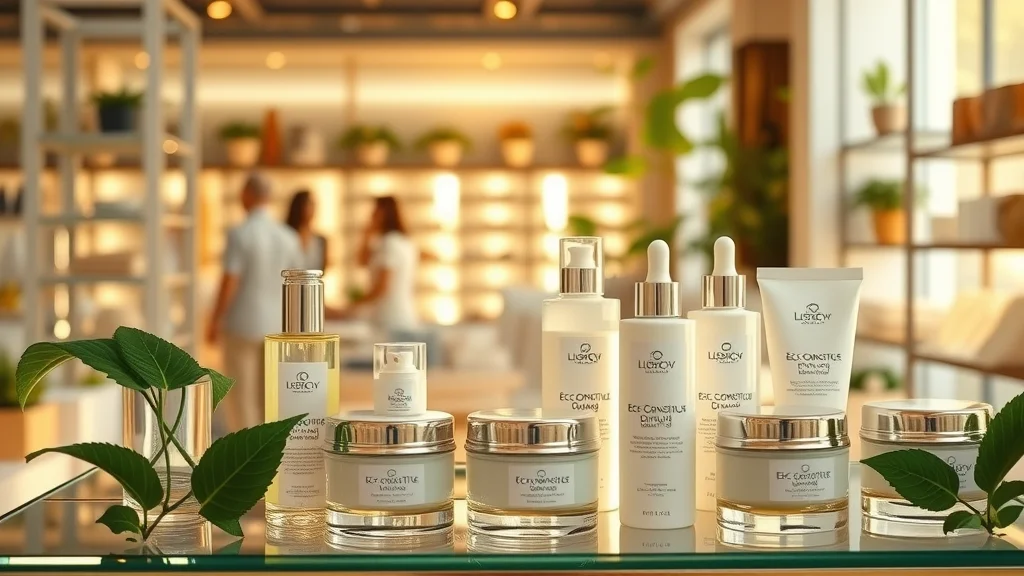
Case Study: A2Z of Beauty’s Approach to Sustainable Packaging Solutions
A2Z of Beauty has emerged as a trailblazer in the sustainable packaging movement, reimagining every step of their product journey to reduce waste and environmental impact. The brand launched a revolutionary refillable system for best-selling cleansers and moisturizers—customers simply purchase an elegant glass jar on their first order, then receive low-impact refill pods with subsequent purchases. Each component, from bamboo caps to recycled cardboard mailers, is selected based on strict evaluative criteria for sustainable beauty packaging.
What sets A2Z of Beauty apart is a commitment to ongoing academic research and industry collaboration. The company’s packaging design team partners with universities to develop and test new sustainable materials, examining everything from shelf life to composting performance. This academic-industry synergy ensures that A2Z’s packaging solutions aren’t just eco-friendly on paper—they’re verified by lifecycle analysis and rigorously tested in real-world conditions. For professionals and brands eager to follow suit, A2Z’s model demonstrates the power of scientific partnerships and a values-driven approach to sustainable beauty.
"Sustainable & eco-friendly beauty and cosmetics packaging isn’t just a trend—it’s a movement reshaping the industry for generations to come."
The Academic Angle: Research Insights on Sustainable & Eco-Friendly Beauty and Cosmetics Packaging
Current Trends in Packaging Research: From Lifecycle Analysis to Consumer Perceptions
Academic research is central to advancing sustainable & eco-friendly beauty and cosmetics packaging. Universities and research institutes are conducting lifecycle analyses to determine the real environmental impact of various packaging alternatives, from raw material extraction through manufacturing, use, and disposal. These studies help industry leaders identify unintended consequences, optimize design for recycling or composting, and avoid greenwashing by quantifying true resource efficiency. The integration of empirical data ensures that the sustainable skincare packaging movement is grounded in science, not assumptions.
Simultaneously, researchers are examining how consumers perceive eco-friendly packaging and what drives their purchasing decisions. Findings reveal that clear labeling, education, and tangible proof of benefit—like refillable systems or visible recycled content—significantly boost acceptance of sustainable packaging solutions. For beauty practitioners and product managers, leveraging these academic insights means not only improving packaging effectiveness but also messaging and market positioning. It’s a holistic approach where evidence, transparency, and innovation converge.
Collaboration Between Industry and Academia for Sustainable Solutions
Partnerships between academia and the beauty industry play a crucial role in pushing sustainability frontiers. Joint research initiatives focus on developing biocompatible adhesives, creating new biodegradable polymers, and testing closed-loop recycling systems that could transform traditional packaging solutions altogether. These collaborations bridge knowledge gaps, bringing together scientists, material engineers, beauty professionals, and product designers to tackle complex sustainability challenges.
For industry managers and prospective researchers alike, the message is clear: sustainable packaging innovation thrives on collective intelligence and shared objective. Academic engagement accelerates the deployment of breakthroughs—such as compostable skincare packaging or refillable luxury containers—and facilitates industry-wide standards for friendly packaging. This not only ensures compliance with regulatory expectations but positions brands as leaders in science-backed sustainable beauty practices.
People Also Ask: Common Questions on Sustainable & Eco-Friendly Beauty and Cosmetics Packaging
What is considered sustainable packaging in the beauty industry?
Sustainable packaging in the beauty industry refers to any packaging solution that is designed to reduce environmental impact throughout its lifecycle. This includes the use of recyclable or biodegradable materials, refillable containers, and packaging that minimizes waste, energy use, or harmful emissions. Sustainable beauty packaging typically also uses eco-friendly inks, avoids unnecessary layers, and sources raw materials responsibly—ensuring both the product and its packaging support a cleaner, greener future for the beauty industry.
How can brands transition to eco-friendly cosmetics packaging?
Brands can transition to eco-friendly cosmetics packaging by conducting a comprehensive audit of their current packaging practices, experimenting with recycled, recyclable, or biodegradable materials, and investing in refillable or reusable systems. Collaboration with suppliers and researchers helps identify viable alternatives to plastic packaging, while clear consumer education builds market acceptance. Implementing pilot strategies—such as limited product lines in sustainable packaging—allows brands to learn, adapt, and scale more environmentally friendly solutions across their beauty product portfolios.
Are biodegradable materials really effective for beauty and skincare packaging?
Biodegradable materials can be highly effective for beauty and skincare packaging when selected and disposed of properly. They break down more quickly than conventional plastics, reducing landfill burden and microplastic pollution. However, effectiveness depends on the type of material, the product it contains, and the availability of appropriate composting facilities. Academic and industry research continues to develop new, high-performing biodegradable materials that ensure care products remain safe and effective while supporting a sustainable beauty industry.
Expert Opinions: Challenges and Opportunities in Sustainable & Eco-Friendly Beauty and Cosmetics Packaging
Balancing Cost, Performance, and Sustainability
One of the most significant challenges facing beauty industry managers is balancing the cost of sustainable materials with the performance and aesthetics demanded by consumers. While glass jars, biodegradable cartons, and refillable solutions offer exceptional environmental benefits, they may entail higher upfront investment and logistical complexity. However, as demand grows and technology advances, economies of scale and innovative manufacturing processes are making sustainable packaging increasingly affordable.
Packaging performance—including barrier properties, product protection, and design versatility—is another key consideration. For professionals developing new sustainable beauty packaging, choosing materials that maintain product integrity while meeting green standards can be complex. Nevertheless, the long-term savings—lower waste management costs, strengthened customer loyalty, and reduced regulatory risk—often outweigh the initial hurdles. As a result, brands and researchers continue to collaborate and innovate, striving to make sustainability a seamless part of the beauty packaging experience.

Future Outlook: Where Is Sustainable Beauty Packaging Heading?
Looking ahead, the future of sustainable & eco-friendly beauty and cosmetics packaging is bright, with new technologies and creative approaches set to redefine norms across the industry. Expect rapid advancements in compostable biomaterials, smart labeling for traceability, and expanded access to refill stations in retail and online. Regulatory shifts and consumer activism will accelerate adoption, while continuous academic research ensures solutions become increasingly sophisticated and environmentally sound.
As brands, researchers, and practitioners collaborate, the line between sustainability and luxury will blur—making sustainable beauty packaging the expected standard, not the exception. It's a future propelled by innovation, collaboration, and a collective vision of cleaner beauty for all.
- Top tips: Choose glass, bamboo, or PCR plastic for eco-friendly packaging solutions, and seek refillable or compostable options when possible.
- Watch for: Regulatory changes, new smart packaging technologies, and collaborative research driving the next wave of sustainable beauty and skincare trends.
FAQs: Sustainable & Eco-Friendly Beauty and Cosmetics Packaging
- What are the most sustainable materials for beauty packaging? Glass, aluminum, bamboo, recycled plastics, and compostable paper/cardboard are widely recognized as the most sustainable packaging materials for beauty products.
- Is refillable packaging truly more eco-friendly? Yes, refillable packaging usually offers significant waste and resource savings over single-use packaging by promoting repeated use and minimizing material consumption.
- How do regulatory changes affect sustainable packaging development? Regulatory changes encourage innovation and set minimum environmental standards, speeding the transition away from conventional plastics and incentivizing use of eco-friendly alternatives throughout the beauty industry.
Key Takeaways on Sustainable & Eco-Friendly Beauty and Cosmetics Packaging
- Sustainable packaging is rapidly becoming an industry norm
- Innovation and collaboration drive long-term eco-friendly solutions
- Brands, professionals, and consumers must work together
In Closing: Elevate Your Brand with Sustainable & Eco-Friendly Beauty and Cosmetics Packaging
Adopting sustainable & eco-friendly beauty and cosmetics packaging is no longer a fringe choice—it’s the path to resilient growth, authenticity, and industry leadership. Practitioners, managers, and academic researchers are shaping a more responsible future for the beauty industry with every eco-conscious decision they make.
If you’re inspired to take your commitment to sustainability even further, consider exploring how eco-friendly practices can be integrated across your entire beauty routine and business strategy. From packaging to product formulation, every step offers an opportunity to make a positive impact. For those interested in debunking common misconceptions and gaining a holistic understanding of beauty industry trends, our article on tummy tuck myths and facts provides valuable insights into separating fact from fiction in beauty and wellness. Continue your journey toward smarter, more sustainable choices and empower yourself with knowledge that elevates both your brand and your personal care philosophy.
For more beauty talk, tips and tricks, be sure to visit https://a2zofbeauty.com/
Sources
- Sustainable Packaging Coalition – https://www.sustainablepackaging.org/
- WWF – https://www.wwf.org.uk/updates/plastic-pollution
- Beauty Packaging – https://www.beautypackaging.com/
- Sage Journals – https://journals.sagepub.com/doi/full/10.1177/0037549720920005
- A2Z of Beauty – https://www.a2zofbeauty.com/
In the realm of sustainable and eco-friendly beauty and cosmetics packaging, several brands are pioneering innovative solutions that marry environmental responsibility with aesthetic appeal. For instance, Elate Cosmetics utilizes bamboo palettes with refillable metal containers, allowing consumers to replenish products without discarding the entire package. Additionally, the company provides seed-infused paper for refills, enabling users to plant wildflowers after use. (designersocean.com) Similarly, Fat and the Moon offers plant-based, handcrafted products housed in recyclable glass or tin pots, emphasizing both sustainability and cruelty-free practices. (designersocean.com) These initiatives exemplify how the beauty industry is evolving to meet consumer demand for environmentally conscious packaging.
 Add Row
Add Row  Add
Add 




Write A Comment